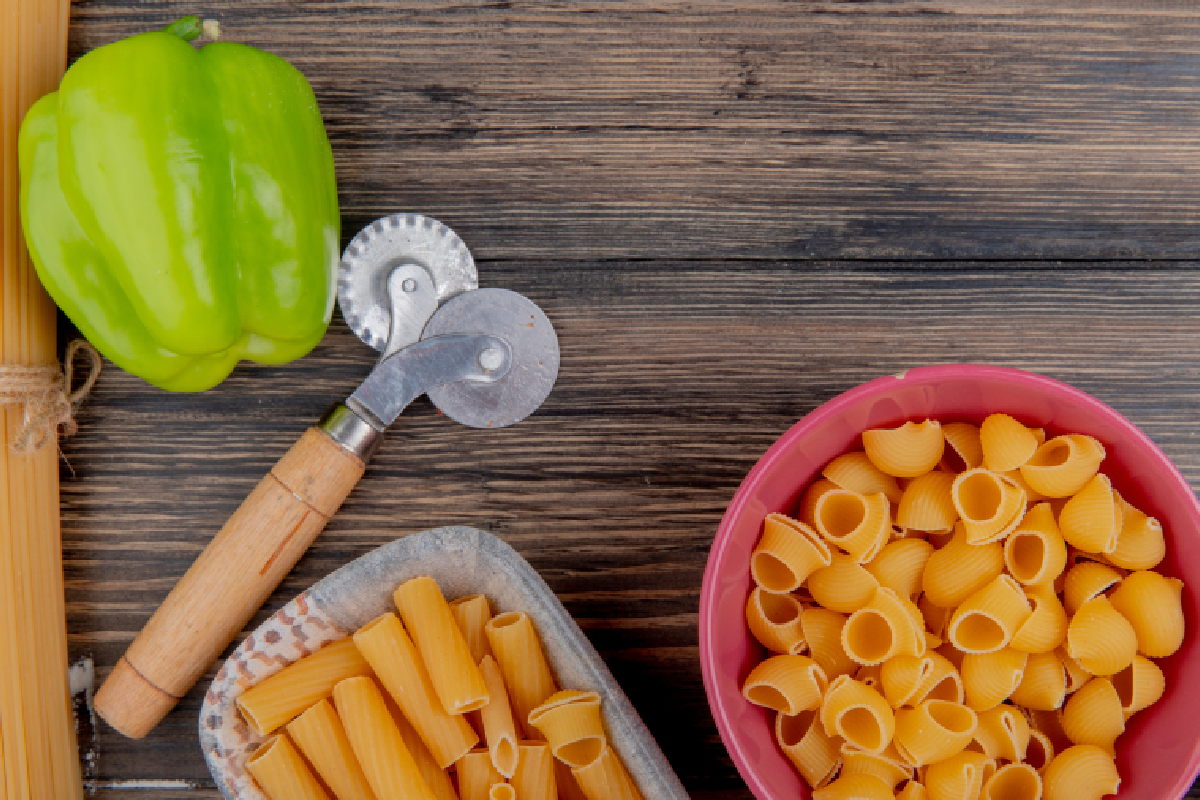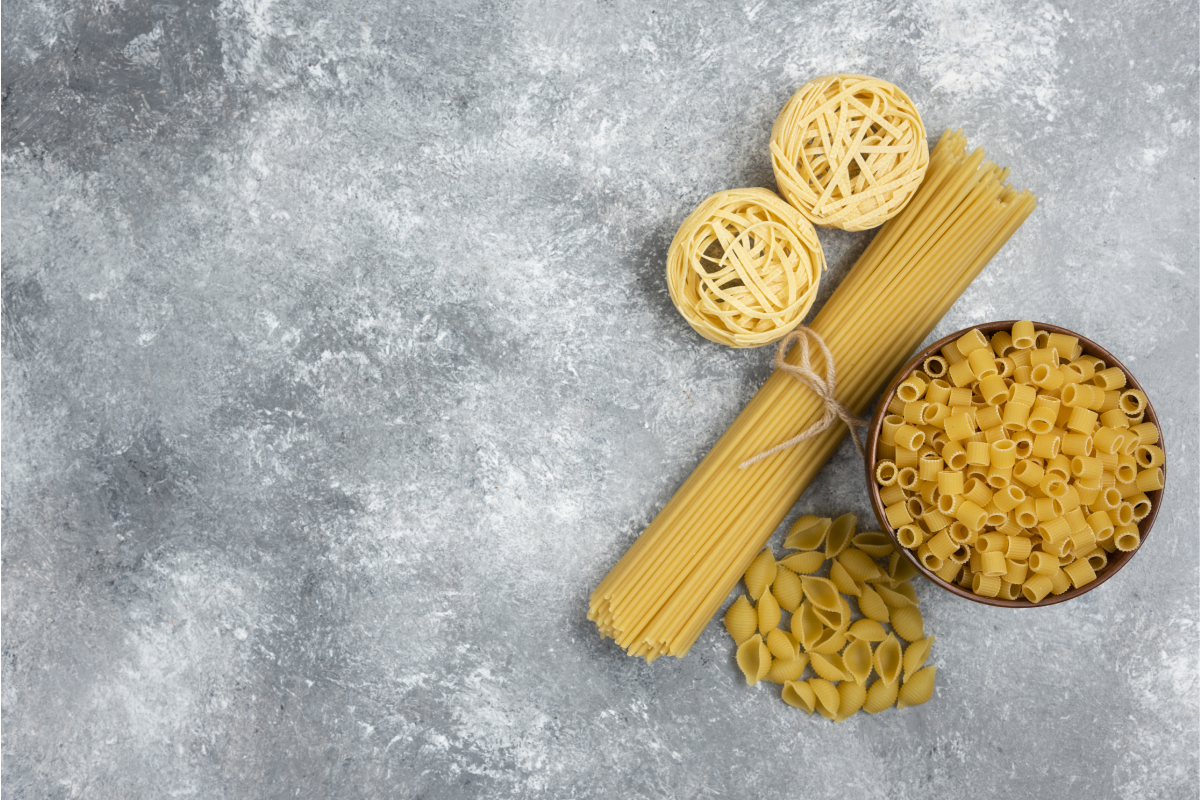Introduction to Ditalini Pasta
Ditalini pasta, a cornerstone of Italian cuisine, boasts a rich history that mirrors the evolution of pasta itself. Characterized by its tiny, tube-like shape, ditalini, which translates to “little thimbles” in Italian, has warmed the hearts and homes of many, emerging as a versatile ingredient in soups, salads, and more.
The Origin Story
The journey of ditalini pasta began in Italy, a country renowned for its pasta diversity. Originating in the South, it quickly became a staple across various regions, celebrated for its ability to complement a wide array of dishes. This pasta type is especially favored in dishes where its small size allows it to blend seamlessly with other ingredients, making every spoonful a harmonious blend of flavors.
A Staple in Italian and Global Cuisine
What makes ditalini truly stand out is its unparalleled adaptability. Whether nestled in a hearty minestrone or mixed into a refreshing pasta salad, ditalini pasta proves time and again that great things indeed come in small packages. Its shape and texture make it the perfect candidate for absorbing the rich flavors of broths and sauces, ensuring that each bite is as satisfying as the last.
Ditalini’s journey from a simple pasta variety to a global kitchen staple reflects its enduring appeal. Its simplicity belies its versatility, making it a beloved ingredient in kitchens worldwide. As we explore the nuances of ditalini pasta, we invite you to appreciate the rich history and culinary possibilities it offers.
The Making of Ditalini Pasta

Crafting ditalini pasta from scratch is an art that marries simplicity with the joy of cooking. With just a few basic ingredients and some kitchen alchemy, you can create these delightful little tubes that are perfect for a myriad of dishes.
Ingredients and Preparation
Ingredients Needed
- 2 cups of all-purpose flour
- 3 large eggs
- A pinch of salt
These humble ingredients serve as the foundation of ditalini pasta, transforming into something magical under the right hands.
Step-by-Step Preparation Guide
- Creating the Dough: On a clean surface, form the flour into a mound, making a well in the center. Crack the eggs into this well and add the pinch of salt. Gradually incorporate the flour into the eggs using a fork, ensuring the mixture combines evenly.
- Kneading the Dough: Once the dough starts to come together, use your hands to knead it for about 10 minutes, until it’s smooth and elastic. If the dough is too sticky, add a little more flour; if too dry, a touch of water.
- Resting: Wrap the dough in plastic wrap and let it rest for at least 30 minutes. This step is crucial as it allows the gluten to relax, making the dough easier to shape.
- Shaping Ditalini: After resting, roll the dough out on a lightly floured surface. Slice it into thin strips, then cut these strips into tiny tubes, roughly a quarter inch long. For an authentic touch, roll these pieces off the back of a fork or a pasta board to give them ridges.
Cooking Techniques
Boiling Perfect Ditalini
For perfectly cooked ditalini, bring a large pot of salted water to a boil. Add the pasta, stirring occasionally to prevent sticking. Cook for about 6-8 minutes or until al dente. Then, drain and incorporate it into your chosen dish.
Tips for Al Dente Pasta
- Use plenty of water: This helps the pasta cook evenly and prevents it from sticking together.
- Salt the water: Salting the boiling water flavors the pasta from the inside out.
- Stir occasionally: This simple action keeps the pasta from clumping together.
- Taste test: Start tasting the pasta a few minutes before the recommended cooking time. It should be tender yet firm to the bite.
Crafting ditalini pasta at home is not just about feeding the body but also nourishing the soul. Through this process, we connect with centuries-old traditions, bringing a piece of Italian heritage into our kitchens. Whether you’re a seasoned chef or a curious novice, making ditalini pasta from scratch is a rewarding endeavor that adds a touch of authenticity to any dish.
Ditalini Pasta in Cuisine
Ditalini pasta’s diminutive size and versatile shape have made it a beloved ingredient in both traditional Italian recipes and innovative dishes worldwide. Let’s dive into how this pasta stars in classic recipes and how it can be adapted for modern tastes.
Traditional Recipes with Ditalini
Pasta e Fagioli
A quintessential Italian dish, Pasta e Fagioli (pasta and beans), is a hearty and comforting soup that showcases ditalini’s ability to complement a rich, savory broth. This rustic dish combines tomatoes, beans, garlic, onions, and herbs, simmered to perfection. Ditalini, added towards the end, absorbs the flavors of the soup, making each spoonful a delightful experience.
Minestrone Soup
Minestrone is another jewel in Italian cuisine’s crown, a vegetable soup that varies by region and season. Ditalini pasta adds body and texture to the soup, mingling with vegetables like carrots, celery, and zucchini. Its small size ensures that it integrates well with the other ingredients, providing a satisfying bite without overpowering the dish’s delicate balance of flavors.
Modern Twists on Classic Dishes
The versatility of ditalini pasta extends far beyond traditional soups. Its small shape and texture make it an excellent choice for creative culinary experiments. Here are a few ways to incorporate ditalini into contemporary recipes:
- Pasta Salads: Cold pasta salads are a staple of picnics and potlucks. Ditalini’s small size and ability to hold onto dressings make it an ideal choice. Mix it with fresh vegetables, a tangy vinaigrette, and your choice of protein for a refreshing and filling meal.
- Baked Pasta Dishes: Take advantage of ditalini’s oven-friendly qualities by using it in baked pasta recipes. Combine it with a creamy béchamel or a robust tomato sauce, layer with cheese, and bake until bubbly and golden. The result is a comforting dish that’s perfect for family dinners.
- Stir-Fried and Sautéed: For a quick and flavorful meal, sauté ditalini with vegetables, garlic, and olive oil. Add some spices or herbs for an extra kick. This method brings out the pasta’s nutty flavor, making for a delicious and easy dish.
The culinary potential of ditalini pasta is limited only by the imagination. Its ability to blend into a variety of dishes, from the heartwarmingly traditional to the boldly innovative, underscores its status as a pantry staple. Whether you’re cooking a time-honored recipe or experimenting with new flavors, ditalini pasta brings a touch of Italian charm to every dish.
Nutritional Information

Diving into the world of ditalini pasta, it’s not just about savoring its delightful taste and versatile use in countless dishes; it’s also important to consider its nutritional profile. This section will shed light on the health benefits and nutritional content of ditalini pasta, providing insights for those mindful of their diet.
Health and Nutrition
Ditalini pasta, like most pasta varieties, is primarily made from durum wheat, offering a good source of complex carbohydrates. These carbs provide the body with a steady energy supply, making ditalini a suitable option for energy-intensive days. Moreover, when opting for whole grain versions, you can benefit from an increased fiber intake, which supports digestive health and helps maintain a feeling of fullness longer.
In terms of vitamins and minerals, ditalini pasta contributes to your daily intake of several key nutrients:
- B Vitamins: Particularly rich in B vitamins like folate and thiamine, ditalini pasta supports brain health and helps convert food into energy.
- Iron: Essential for the formation of red blood cells and the transport of oxygen throughout the body.
- Magnesium: Plays a role in over 300 enzymatic reactions, including muscle and nerve function, blood glucose control, and blood pressure regulation.
Comparisons with Other Pasta Types
When comparing ditalini to other pasta shapes, the nutritional differences are minimal, as most pasta is made from similar ingredients. However, the choice between regular, whole grain, and gluten-free options can significantly impact nutritional content and health benefits:
- Whole Grain Pasta: Offers more fiber, vitamins, and minerals than its refined counterparts. It’s a healthier choice for those looking to improve their diet quality.
- Gluten-Free Pasta: Made from alternative grains like rice, corn, or quinoa, gluten-free pasta is suitable for those with celiac disease or gluten sensitivity. While its nutritional profile varies, it often contains less protein but can be enriched with vitamins and minerals.
Incorporating ditalini pasta into a balanced diet can be part of a healthy lifestyle, especially when mindful of portion sizes and the sauces or ingredients you pair it with. Opting for whole grain versions and loading up on vegetables and lean proteins can enhance the nutritional value of your meals, making ditalini pasta a versatile and wholesome choice for various dishes.
FAQs
As ditalini pasta continues to charm its way into diverse culinary traditions, it sparks curiosity and questions about its nature, origins, and versatility. In this section, we’ll dive into some frequently asked questions to enrich your understanding and appreciation of ditalini pasta.
What Kind of Pasta is Ditalini?
Ditalini pasta belongs to the family of small, tubular pasta shapes known for their short length and hollow center. Its design makes it particularly adept at absorbing flavors and integrating with a variety of ingredients, from beans and vegetables in soups to being a key player in salads and casseroles. Its versatility and size make it a popular choice for dishes requiring pasta to complement rather than dominate the dish.
What Does Ditalini Mean in Italian?
The name “ditalini” translates to “little thimbles” in Italian, a nod to its petite, tubular shape that resembles a thimble. This charming name reflects the pasta’s size and role in Italian culinary traditions, where it’s often used in soups and broths, contributing to hearty and comforting dishes.
Can I Substitute Orzo for Ditalini Pasta?
Yes, orzo can be a suitable substitute for ditalini pasta in many recipes, especially in soups and salads. Orzo, a small, rice-shaped pasta, offers a similar texture and ability to mingle with other ingredients, making it a versatile alternative. However, it’s worth noting that the texture and cooking time may vary slightly, so adjustments may be needed to achieve the desired outcome in your dish.
How Do You Pronounce the Name Ditalini?
The correct pronunciation of ditalini is “dee-tah-LEE-nee.” Emphasizing the syllables correctly will help you sound like a native when discussing this delightful pasta type. Practice a few times, and you’ll be ordering or talking about ditalini pasta with confidence, whether in a restaurant or with fellow pasta enthusiasts.
Understanding these aspects of ditalini pasta enriches your culinary knowledge and enhances your cooking experiences. Whether you’re experimenting with new recipes or perfecting a traditional dish, these insights into ditalini pasta will help you appreciate the depth and diversity of Italian pasta cuisine.
Conclusion and Tips
As we wrap up our journey through the delightful world of ditalini pasta, it’s clear this versatile pasta type is more than just an ingredient; it’s a staple of Italian cuisine that has found its way into the hearts and kitchens of food lovers worldwide. From its humble origins to its role in comforting soups, vibrant salads, and everything in between, ditalini pasta exemplifies how something so small can make a significant impact on culinary traditions.
Conclusion
Ditalini pasta has a rich history and offers numerous nutritional benefits. Its culinary versatility makes it a beloved choice among chefs and home cooks. Thanks to its ability to absorb flavors and enhance the texture of dishes, ditalini is a favorite ingredient in both traditional recipes like Pasta e Fagioli and modern creations like pasta salads.
For those seeking alternative cooking techniques, our ““Ultimate Guide to Making Fried Chicken without Buttermilk”provides valuable insights to inspire your culinary experiments. Similarly, our article on “Garlic Shrimp: A Culinary Delight Everyone Should Try” offers tips for infusing dishes with flavor, which can elevate your ditalini pasta recipes.
Additional Cooking Tips
- Experiment with Flavors: Don’t hesitate to experiment with different ingredients and flavors when cooking with ditalini pasta. Its neutral taste makes it an excellent canvas for bold and subtle flavors alike.
- Cook in Broth for Extra Flavor: For an added flavor boost, try cooking ditalini pasta in vegetable or chicken broth instead of water. This technique infuses the pasta with a depth of flavor that water alone cannot provide.
- Use Quality Ingredients: Given ditalini pasta’s role in simple dishes, using high-quality ingredients can significantly enhance the final dish. Fresh vegetables, artisan cheeses, and high-quality olive oil can transform a straightforward pasta dish into a gourmet experience.
- Perfect for Meal Prep: Ditalini pasta’s sturdy structure makes it ideal for meal prep. Cooked dishes can be stored in the refrigerator for several days, retaining their flavor and texture, making it a convenient option for busy schedules.
In embracing ditalini pasta, we celebrate the simplicity and elegance of Italian cuisine. Its adaptability and enduring appeal underscore the joy of cooking with pasta—a joy that transcends cultural and culinary boundaries. Whether you’re a seasoned pasta enthusiast or a curious newcomer, ditalini pasta invites you to explore the endless possibilities it offers, one delightful bite at a time.

